UPSC Daily Current Affairs- 9th November 2023 | Current Affairs & Hindu Analysis: Daily, Weekly & Monthly PDF Download
GS-I
Loss and Damage Fund (LDF) talks leave developing nations at new disadvantage
Subject: Social Issues
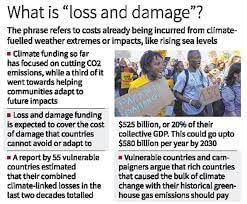
Why in News?
In the escalating climate crisis, the terms “adaptation” and “loss and damage” (L&D) have taken center stage.
- While the concept was embraced at COP 27, recent meetings of the Transitional Committee (TC) to operationalize the fund have encountered major roadblocks.
Birth of the L&D Fund
- Historic Pollution Accountability: The call for affluent nations to acknowledge their historical pollution accountability dates back over 30 years.
- COP 19 Agreement: In 2013, at COP 19 in Warsaw, Poland, member countries formalized the creation of the L&D fund. It aimed to provide financial and technical support to economically developing nations grappling with L&D due to climate change.
- Subsequent Developments: COP 25 introduced the Santiago Network for L&D, and COP 26 established the Glasgow Dialogue on finance for L&D. COP 27 in November 2022 saw the creation of the L&D fund and a Transitional Committee (TC) tasked with operationalizing the fund.
Challenges in Creation of the L&D Fund
- Contentious Issues: TC meetings have grappled with contentious issues such as hosting the fund at the World Bank, the principle of common but differentiated responsibilities (CBDR), climate reparations, and eligibility criteria for developing nations.
- Developed vs. Developing Nations: These disagreements have deepened the divide between developed and developing nations, hampering progress.
Outcome of TC4 and TC5 Meetings
- TC4 Impasse: The fourth meeting of the TC concluded without a consensus on how to operationalize the L&D fund, reflecting divisions on key issues.
- TC5 Draft Recommendations: An impromptu fifth meeting of the TC led to draft recommendations forwarded to COP 28. Developing nations conceded to the fund being hosted by the World Bank temporarily, but developed nations, including the U.S., remained non-committal regarding primary donor status and rejected references to CBDR, equity, and liability in the draft.
- Lack of Clarity: The draft does not specify the fund’s size due to pressure from certain developed nations.
A blow to climate multilateralism
- Erosion of Trust: The outcome underscores a severe trust deficit between affluent and emerging economies concerning historical responsibilities, deepening the rift between wealthy and impoverished nations.
- Failure to Fulfill Commitments: The unwillingness of wealthy nations to fulfill intended commitments undermines global climate negotiations, cooperation, and climate justice.
- Humanitarian Consequences: The watering down of the L&D fund can lead to humanitarian crises, food shortages, displacement, conflict, and exacerbate the suffering of vulnerable communities.
- Economic and Environmental Impact: It also has economic consequences, with potential financial crises and environmental degradation, exacerbating global economic instability.
- Security Implications: Climate-induced instability may lead to security implications as conflicts emerge in vulnerable nations, threatening to spill across borders.
L&D as Part of Climate Justice
- Balancing Adaptation and L&D: Adaptation and L&D are not mutually exclusive but coexist on the continuum of climate resilience.
- Moral and Financial Responsibility: Addressing L&D is a moral and financial responsibility of affluent nations, ensuring climate justice, equity, and solidarity.
- Global Climate Action: Failure to meet these obligations can derail global climate action, adding pressure to future COP talks.
Conclusion
- The protracted impasse surrounding the Loss and Damage fund reflects a troubling lack of consensus and trust between nations, hindering climate justice and cooperation.
- As the world grapples with the consequences of climate change, balancing adaptation and addressing L&D remains paramount.
Source: The Hindu
An under-discussed facet of colonial history
Subject: Modern History
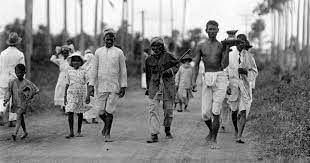
Why in News?
The article explores the historical exploitation of indentured labor, particularly focusing on the plight of Plantation Tamils in Sri Lanka. Shashi Tharoor emphasizes the challenges, discrimination, and struggles faced by this community, calling for a post-colonial, inclusive identity and highlighting the importance of decolonization in shaping a more equitable future for nations with colonial histories.
What is indentured labour?
- Definition: Indentured labor is a historical practice where individuals, often from impoverished backgrounds, enter a contract (indenture) with an employer.
- Terms: In exchange for their service, laborers receive passage, accommodation, and sometimes wages, binding them to work for a specified number of years (typically 4 to 7).
- Purpose: Common during the 17th to 20th centuries, indentured labor served as a substitute for slavery, especially in regions where slavery had been abolished.
Key Highlights:
- Bicentenary Commemoration: The article discusses the recent commemoration of the bicentenary of Tamil indentured laborers’ arrival in Sri Lanka, emphasizing the historical significance of this event.
- Impact of British Empire: Shashi Tharoor highlights the detrimental impact of the British Empire’s policies, including the exploitation of colonies, draining of resources, and the introduction of indentured labor as a form of bonded servitude.
- Plight of Plantation Tamils: The article sheds light on the challenges faced by Plantation Tamils in Sri Lanka, detailing their exploitation, discrimination, and struggles for basic rights, identity, and integration.
- Identity and Integration: Despite adversities, Plantation Tamils forged an identity rooted in Tamil traditions and values. The article acknowledges their journey towards integration and efforts to reclaim their heritage as equal citizens of Sri Lanka.
Challenges faced by these labors :
- Indentured Labor Exploitation: The article highlights the exploitative nature of indentured labor, depicting the harsh conditions, misinformation, and economic hardships faced by laborers brought to distant lands.
- Discrimination and Statelessness: Plantation Tamils faced discrimination by colonial practices, being labeled “foreigners” and rendered stateless. Discriminatory laws, like the Citizenship Act of 1948, further marginalized them.
- Kangani System: The detrimental role of the sub-contractor system, known as kanganies, is discussed, emphasizing the abuse of power and exploitation faced by Indian.
Key Phrases:
- Licensed Looting: Describes the initial phase of the British imperial project as a form of licensed looting in service of crude capitalism.
- Indentured Labour: Refers to the replacement of slavery with bonded servitude, termed “indentured labor,” as a consequence of the abolition of slavery.
- New Kind of Slavery: Hugh Tinker’s characterization of indentured labor, highlighting its exploitative and degrading nature.
- Decolonization: Stresses the importance of post-colonial countries breaking free from oppressive practices and attitudes inherited from their imperial rulers.
Analysis: Tharoor critically analyzes the historical exploitation by the British Empire, juxtaposing the wave of liberal humanism in Europe with the continued oppression in the colonies. He underscores the challenges faced by Plantation Tamils, portraying their struggle for identity and integration as a valorous subaltern endeavor.
Key Data/Facts:
- Bicentenary: Marks the 200th anniversary of Tamil indentured laborers’ arrival in Sri Lanka in November 1823.
- Citizenship Act of 1948: The legislation rendered Plantation Tamils stateless, hindering their assimilation into Sri Lankan society.
- Economic Shift to Tea: The shift from coffee to tea plantations in Sri Lanka resulted in a massive transfer of Indian Tamils due to increased demand for labor.
Way Forward:
- Decolonization: Tharoor emphasizes the need for post-colonial countries like Sri Lanka to actively decolonize themselves from oppressive practices inherited from imperial rulers.
- Inclusive Identity: The article suggests that forging an inclusive, post-colonial identity for all people in Sri Lanka should be central to the nation-building process.
- Land Ownership: The government’s potential plan to divide plantations, making workers owners of the land they work on, is seen as a positive step, representing a potential way forward.
Source: Indian Express
GS-II
SC says cracker order applies to country, not just NCR
Subject: Polity
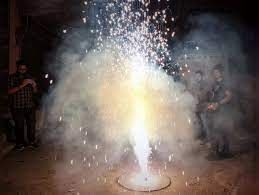
Why in News?
The Supreme Court clarified that its order banning the use of barium and other banned chemicals in firecrackers applies to the entire country, and not just the National Capital Region.
- The apex court was hearing an application that sought directions to the Rajasthan government to comply with the top court’s orders.
SC orders on firecrackers
- In October 2018, the apex court had banned the production and sale of all crackers except ‘green crackers’ and those with reduced emissions (improved crackers).
- It also:
- banned the manufacture and sale of ‘joined crackers’ (long rows of crackers joined together),
- prohibited the use of barium salts in fireworks and
- said their noise levels should be within permissible limits.
- In 2020, the National Green Tribunal had banned the sale and use of all kinds of firecrackers in NCR.
- It said that green crackers would be permitted only in cities and towns where air quality was moderate or poor.
- In September 2023, the SC junked a plea by the firecracker manufacturers’ association:
- to allow the use of joined crackers and
- to add barium with improved additives in green crackers.
What is a firecracker made of?
- Ingredients
- Firecrackers typically consist of four primary ingredients — oxidiser, fuel, colouring agents, and binder.
- An oxidiser is required for the cracker to catch fire;
- the fuel sustains the fire;
- colouring agents give it the colours and sparkles;
- the binder holds this mixture in place till the cracker has spent itself.
- Colouring agents
- Chemicals like barium are colouring agents.
- These were banned because of their harmful impact on human health, such as irritation in the respiratory tract, skin allergies, breathing difficulties, and even cancer.
- The white colour in a cracker is emitted through aluminium, magnesium and titanium, while the orange colour is carbon or iron.
- Similarly, yellow agents are sodium compounds while blue and red are copper compounds and strontium carbonates.
- The green agent is barium mono chloride salts or barium nitrate or barium chlorate.
Green crackers
- About
- Green crackers are so named because they do not contain harmful chemicals that would cause air pollution.
- Components in firecrackers are replaced with others that are less dangerous and less harmful to the atmosphere.
- These crackers emit less-harmful chemicals, and also release water vapour, which acts as dust suppressant.
- Research done by
- The idea of producing green crackers was researched by a network of CSIR labs, including Central Electro Chemical Research Institute (CECRI), Indian Institute of Chemical Technology, National Botanical Research Institute and National Chemical Laboratory.
- Categories
- The three broad categories of such crackers are SWAS, SAFAL and STAR, developed by CSIR.
- SWAS stands for “safe water releaser”, and has a small water pocket that is released in the form of vapour when the cracker is burst. This suppresses dust.
- STAR, or safe thermite cracker, does not comprise potassium nitrate and sulphur, and emits reduced particulate matter at reduced sound intensity.
- SAFAL is safe minimal aluminium, which has minimum usage of aluminium, and used magnesium instead. This too emits less noise than traditional crackers.
Source: The Hindu
Only 3% of Kota’s students have visited a mental health professional
Subject: Polity
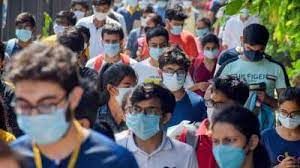
Why in News?
The article sheds light on the alarming rates of student suicides in Kota, primarily attributed to academic pressure. It explores the various pressures students face, their coping mechanisms, and the significant impact on mental health, emphasizing the urgent need for institutionalized counseling and holistic well-being programs.
Key Highlights:
- Student Suicides in Kota: According to NCRB data in 2021, student suicides in India accounted for 8% of total suicides. Kota, a prominent coaching hub, witnessed 25 suicides this year, raising concerns about academic pressure.
- Impact of NEET and JEE Exams: Students believe clearing these exams is crucial for a better life, leading to heightened stress. Almost 20% often suffer from thoughts related to under-performing, impacting mental health.
- Contributing Factors: Parental pressure, financial stress, and peer pressure contribute to students’ anxieties. Loneliness is prevalent, with 53% experiencing it occasionally.
Different Kinds of Pressures:
- NEET and JEE Significance: Students perceive success in NEET and JEE exams as vital for a better future, intensifying academic pressure.
- Fear of Under-Performance: Nearly 20% constantly grapple with thoughts of potential consequences if they under-perform, leading to heightened stress levels.
- Immediate Family Influence: Students with family members who studied in Kota before them often face additional academic pressure.
- Parental Expectations: Almost 10% experience frequent parental pressure, while a quarter encounters it occasionally, affecting mental well-being.
- Gender Disparity: Girls tend to face slightly higher parental pressure compared to boys, highlighting gender-specific challenges.
- Financial Pressure: 6% of students frequently feel financial stress, and 25% experience it occasionally, adding to the array of pressures.
Impact on Mental Health:
- Post-Coaching Mental Health: Close to 30% report a decline in mental health after joining coaching classes, indicating the adverse impact of the academic environment.
- Body Pain and Emotional Changes: A significant portion experiences heightened nervousness, mood swings, and physical discomfort, adversely affecting mental health.
- Loneliness Prevalence: More than half (53%) experience loneliness occasionally, reflecting the emotional toll of the academic journey in Kota.
- Psychological Strain: Emotional challenges such as increased nervousness, mood swings, and loneliness affect approximately three in every ten students.
- Anger and Frustration: Nearly 30% feel a rise in anger, and over a quarter report increased frustration and fear, showcasing the multifaceted impact on emotional well-being.
Challenges and concerns:
- Deteriorating Mental Health: Close to 30% feel their mental health worsened after joining coaching classes. Over 40% feel more fatigued, and many report increased nervousness, loneliness, and mood swings.
- Limited Professional Help: Despite poor mental health indicators, only 3% seek assistance from mental health professionals, emphasizing a lack of awareness and proactive initiatives.
- Need for Proactive Measures: Almost half (48%) don’t feel the need for mental health visits, underlining the necessity for more proactive efforts in promoting mental well-being.
- Advocacy for Mental Health: The data highlights the urgency of institutionalized counseling mechanisms and increased awareness to encourage young individuals to prioritize mental health.
Way Forward:
- Implementing Comprehensive Counseling: Establishing structured counseling services within coaching centers and Kota to address students’ mental health needs.
- Promoting Awareness: Conducting awareness campaigns to emphasize the importance of seeking professional mental health support.
- Integrating Holistic Approaches: Incorporating holistic well-being programs that address not only academic stress but also overall physical and mental health.
- Educational Initiatives: Launching educational initiatives to equip students with coping skills and stress management techniques.
- Scholarship Programs: Expanding scholarship programs to ease financial burdens and create a more inclusive educational environment.
Source: The Hindu
National Investigation Agency
Subject: Polity
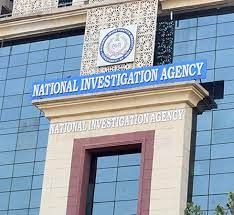
Why in News?
The National Investigation Agency, has carried out coordinated searches at eight locations across Punjab, Uttarakhand, and Uttar Pradesh in a heroin seizure case recently.
Background:-
- The searches relate to the seizure of a substantial quantity of narcotics, specifically heroin, which was intercepted upon its arrival in India through the Integrated Check Post in Attari, Amritsar in April last year.
About National Investigation Agency:-
- NIA is functioning as the Central Counter Terrorism Law Enforcement Agency in India.
- Establishment: 2008.
- It was established by the National Investigation Agency Act, enacted on 31-12-08.
- Ministry: Ministry of Home Affairs.
- HQ: New Delhi.
- It is a central agency to investigate and prosecute offences:-
- affecting the sovereignty, security and integrity of India, security of the State, and friendly relations with foreign States.
- against atomic and nuclear facilities.
- smuggling in High-Quality Counterfeit Indian Currency.
Objectives:-
- It implements international treaties, agreements, conventions and resolutions of the United Nations, its agencies and other international organizations.
Historical Background:-
- The agency at the Central level was created for the investigation of offences related to terrorism and certain other Acts post-2008 Mumbai terror attacks.
Functions of NIA:-
- In-depth professional investigation of scheduled offences using the latest scientific methods.
- Ensuring effective and speedy trials.
- Developing into a thoroughly professional, result-oriented organization.
- Developing a professional workforce through regular training and exposure to the best practices and procedures.
- Maintaining professional and cordial relations with the governments of States and Union Territories and other law enforcement agencies in compliance with the legal provisions of the NIA Act.
- Assist all States and other investigating agencies in the investigation of terrorist cases. (Unlawful Activities and (Prevention) Act (UAPA))
- Build a database on all terrorist-related information.
- Share the database available with the States and other agencies.
- Study and analyse laws relating to terrorism in other countries.
Source: AIR
GS-III
Basics of Electric Power Transmission
Subject: Economy
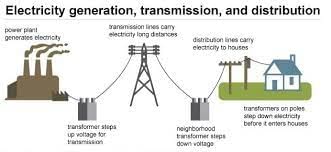
Why in News?
In 1954, India’s first Prime Minister, Jawaharlal Nehru, referred to dams as “the temples of modern India” during a visit to the Bhakra Nangal Dam site.
- This statement emphasized the critical role of electricity in the nation’s development and its transmission as the cornerstone of economic progress.
This article offers a simplified introduction to the world of electric power transmission.
Three Components of Power Supply
- Generation: Electricity is generated at power plants, including renewable energy installations.
- Transmission: It involves the distribution of electricity through a network comprising substations, switches, overhead and underground cables, transformers, and more.
- Distribution: The final step is delivering electricity to consumers, tailored to the requirements of various machines and applications.
Key Principles of Electric Power Transmission
- Efficiency and Voltage: Lower current and higher voltage enhance transmission efficiency. Transformers play a crucial role in voltage manipulation, stepping it up before transmission and reducing it for consumers.
- Resistance and Cable Thickness: Transmission cables exhibit resistance, leading to energy loss. Thicker cables minimize losses but also increase costs.
- Distance and Transmission Cost: Longer transmission distances result in lower costs.
- Alternating Current (AC): AC power transmission is predominant due to its adaptability and higher efficiency compared to direct current (DC). However, higher AC frequencies result in increased resistance.
Understanding AC Power
- Three-Phase AC: AC power transmission commonly utilizes three-phase AC, where voltage periodically changes polarity.
- Phases in AC: In a three-phase AC circuit, three wires carry AC current in different phases, typically at 120°, 240°, and 360°.
- AC in Household Appliances: Consumers receive three-phase AC power, which is used in household appliances for ease of control.
Transmission Process
- Voltage Stepping: Voltage is stepped up at power plants using transformers before being transmitted.
- Transmission Lines: Suspended from transmission towers, transmission lines carry the electricity across long distances.
- Safety Measures: Insulators, circuit-breakers, grounding, arresters, and dampers ensure safe and stable transmission.
- Switches: Used to control current availability and to redirect currents between lines.
- Substations: Different types of substations perform tasks like power collection, frequency modification, voltage reduction for distribution, and diagnostics.
Operation of Power Grids
- National Grids: A national grid encompasses generation, transmission, and distribution. It must accommodate various power sources, production locations, and consumption patterns.
- Storage Facilities: Grids include storage systems to manage surplus and deficit power supply.
- Flexible Sources: Gas turbines and automated systems respond to fluctuating consumer demand or emergencies.
- Grid Management: Grids maintain synchronized frequencies, manage demand, control voltage, and improve power factor.
- Wide-Area Synchronous Grids: Such grids, where all generators produce AC at the same frequency, result in lower costs but require measures to prevent cascading failures.
Key agencies in Power Transmission
India’s power transmission sector relies on key agencies to manage and enhance the electricity grid. These include:
- State Transmission Utilities (STUs): Managing intrastate power transmission within each state.
- National Load Despatch Centre (NLDC): Maintaining national power balance and grid security.
- Regional Load Despatch Centres (RLDCs): Overseeing regional power operations and grid stability.
- Central Electricity Regulatory Commission (CERC): Regulating tariffs and power transmission at the national level.
- State Electricity Regulatory Commissions (SERCs): Regulating power transmission within individual states.
- Private Transmission Companies: Collaborating with government agencies for grid expansion and modernization.
Conclusion
- Electric power transmission is a complex but vital aspect of modern civilization, serving as the backbone of economic development.
- Understanding its basic principles sheds light on the intricate network that powers our lives and fuels progress.
Source: The Hindu
Venus
Subject: Science and Technology

Background:-Recently, Astronomers peering at the atmosphere of Venus have detected clear signs of atomic oxygen in daylight.
- Atomic oxygen is known to exist in the planet’s atmosphere, according to theoretical models, and has even been directly detected on Venus’ nightside but the dayside detection means we have new insight into the dynamics of the Venusian atmosphere.
- Surface Temperature: 462 °C
- Number of Moons: None
- First Recorded: 17th century BCE by Babylon astronomers
- It is one of the four inner, terrestrial (or rocky) planets.
- It is the only planet named after a female.
- It is named after the Roman goddess of love and beauty.
- It is the second planet from the Sun.
- It is the sixth in the solar system in size and mass.
- It is the brightest planet.
- It is the hottest planet in the solar system because of the high concentration of carbon dioxide which works to produce an intense greenhouse effect.
- Unlike the other planets in our solar system, Venus and Uranus spin clockwise on their axis.
- Venus has been called Earth’s twin because of the similarities in their masses, sizes, and densities and their similar relative locations in the solar system.
- US: Mariner series 1962-1974, Pioneer Venus 1 and Pioneer Venus 2 in 1978, Magellan in 1989.
- Russia: Venera series of space crafts 1967-1983, Vegas 1 and 2 in 1985.
- Japan: Akatsuki in 2015.
- Europe: Venus Express in 2005.
- India: Shukrayaan (to be launched in 2024.)
Source: The Hindu
|
38 videos|5288 docs|1117 tests
|
FAQs on UPSC Daily Current Affairs- 9th November 2023 - Current Affairs & Hindu Analysis: Daily, Weekly & Monthly
| 1. What is the Loss and Damage Fund (LDF) and why are developing nations at a new disadvantage in its talks? |  |
| 2. Why is the Supreme Court's cracker order applicable to the entire country and not just the National Capital Region (NCR)? |  |
| 3. What percentage of students in Kota have visited a mental health professional? |  |
| 4. What is the National Investigation Agency (NIA) and what is its role? |  |
| 5. What are the basics of electric power transmission? |  |





















